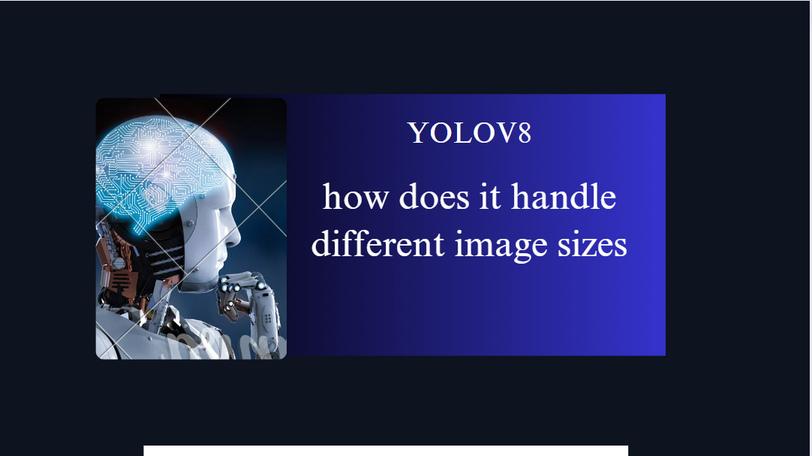What is Yolov8 and how does it handle different image sizes?
Yolov8 is the latest version of the YOLO model that can perform object detection, pose estimation, and segmentation tasks in real-time. It was developed by the Ultralytics team. It can handle the various resolutions and aspect ratios of the image. It is designed for fast, accurate, and easy to use in different tasks.
Yolov8 can handle different image sizes. The width and height of the images should be multiple of 32 because the maximum stride of the backbone is 32 of yolov8 and the model is a fully convolutional network. The model uses letterboxing methods that involve resizing the model while maintaining the aspect ratio of the image and then padding it with black bars to make it square.
Suppose an image contains the shape with (800, 700). The letterboxing method does not resize the image into (640,640) directly. First, it will try to maintain to keep the aspect ratio of the image during resizing (640,610). Then The rest of the images will be padded with black bars to make it square and make it in (640,640) size. It is not needed to keep the size to (640,640). It can be any value that is divisible by 32 like 512 or others.
An example. Let's start training by:
from ultralytics.yolo.engine.model import YOLO
model = YOLO("yolov8n.pt")
results = model.train(data="coco128.yaml", imgsz=512)
By printing what is fed to the model (im) in trainer.py you will obtain the following output:
Epoch GPU_mem box_loss cls_loss dfl_loss Instances Size
0%| | 0/8 [00:00<?, ?it/s]
torch.Size([16, 3, 512, 512])
1/100 1.67G 1.165 1.447 1.198 226 512: 12%|█▎ | 1/8 [00:01<00:08, 1.15s/it]
torch.Size([16, 3, 512, 512])
1/100 1.68G 1.144 1.511 1.22 165 512: 25%|██▌ | 2/8 [00:02<00:06, 1.10s/it]
torch.Size([16, 3, 512, 512])
So, during training, images have to be reshaped to the same size in order to be able to create mini-batches as you cannot concatenate tensors of different shapes. imgsz selects the size of the images to train on.
Now, let's have a look at the prediction. Let's select the images under assets as source and 'imgsz' 512 by
from ultralytics.yolo.engine.model import YOLO
model = YOLO("yolov8n.pt")
results = model.predict(stream=True, imgsz=512) # source already setup
By printing the original image shape (im0) and the one fed to the model (im) in predictor.py you will obtain the following output:
(yolov8) ➜ ultralytics git:(main) ✗ python new.py
Ultralytics YOLOv8.0.23 🚀 Python-3.8.15 torch-1.11.0+cu102 CUDA:0 (Quadro P2000, 4032MiB)
YOLOv8n summary (fused): 168 layers, 3151904 parameters, 0 gradients, 8.7 GFLOPs
im0s (1080, 810, 3)
im torch.Size([1, 3, 512, 384])
image 1/2 /home/mikel.brostrom/ultralytics/ultralytics/assets/bus.jpg: 512x384 4 persons, 1 bus, 7.4ms
im0s (720, 1280, 3)
im torch.Size([1, 3, 288, 512])
image 2/2 /home/mikel.brostrom/ultralytics/ultralytics/assets/zidane.jpg: 288x512 3 persons, 2 ties, 5.8ms
Speed: 0.4ms pre-process, 6.6ms inference, 1.5ms postprocess per image at shape (1, 3, 512, 512)
You can see that the longest image side is reshaped to 512. The short side is reshaped to the closest multiple of 32 while maintaining the aspect ratio. As you are not feeding multiple images at the same time you don't need to reshape images into the same shape and stack them, making it possible to avoid padding.
Hope, the idea is clear to you. Happy Learning!!!







